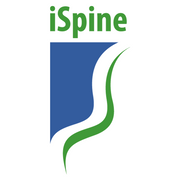
Whether you’re dealing with migraines or lower backaches, chronic pain management can be a true challenge. When you’re trying to fall asleep, it might even seem unmanageable. Use the following guide to learn about the correlation between pain and sleep and how you can finally get some rest.
The Relationship Between Pain & Sleep
If you’re feeling physical discomfort, you won’t be able to get into a comfy position and drift off. This can lead to insomnia or difficulty falling asleep in the first place. Even once you do doze off, chronic pain can cause “microarousals,” or shifts from a sleep state into a lighter, less restorative state.
If you have trouble falling asleep one night, it can make it even more difficult to fall asleep on subsequent nights. According to researchers, almost one in four people with chronic pain have been professionally diagnosed with a sleep disorder.
One the other hand, sleep affects pain. If you don’t get the recommended seven to nine hours of sleep in a night, you’ll wake up feeling uncomfortable and experience more chronic pain throughout the day. This will make it harder to fall asleep when nighttime rolls around, starting a vicious cycle.
How to Get a Better Night’s Sleep If You Have Chronic Pain
 First, focus on covering the standard “sleep hygiene” bases recommended to everyone, regardless of pain level. This includes stopping alcohol consumption at least two to three hours before bed and halting caffeine consumption at least six hours prior. Keep your bedroom 70 degrees or lower, turn off all lights and block out sound with earplugs, if necessary.
First, focus on covering the standard “sleep hygiene” bases recommended to everyone, regardless of pain level. This includes stopping alcohol consumption at least two to three hours before bed and halting caffeine consumption at least six hours prior. Keep your bedroom 70 degrees or lower, turn off all lights and block out sound with earplugs, if necessary.
Once you have the ideal sleep environment, focus on managing your chronic pain. If the doctor or a specialist recommends it, take a painkiller like ibuprofen or acetaminophen to mitigate your discomfort. Then, use ice packs or hot water bottles to decrease inflammation or promote circulation, as necessary.
After taking care of your body, use relaxation techniques to calm your mind. Mindfulness meditations primarily focus on breath leaving and entering the body. Body scanning relaxation techniques involve envisioning each part of your body—one by one, from the toes to the head—engaging and then releasing. You could also use white noise, such as ocean or rainforest sounds, to envision a relaxing environment and stop thinking about your pain or the day’s responsibilities.
If you’re looking for professional help with chronic pain management so you can get a better night’s sleep, contact iSpine Pain Physicians of the Twin Cities, MN. They have five locations, so you can find help in Maple Grove, Coon Rapids, Chaska, Shakopee, Sartell or Delano. Whether you’re looking for back injections or radiofrequency ablations, you can count on their team to develop a personalized treatment plan for your needs. To learn more about their services, visit the website. Call (763) 201-8191 to speak with a representative and make an appointment.
About the Business
Have a question? Ask the experts!
Send your question

